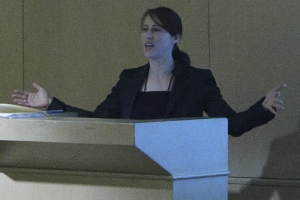April 1
Creating Unbiased, Understandable Shared Decision Materials: Is It Possible?
0 comments
April 1
0 comments

Patient decision aids “prepare patients to make informed, values-based decisions with their practitioner,” said Geri Lynn Baumblatt, who works with decision scientists, clinicians, and patients to create multimedia decision aids. She gave a broad and detailed explanation of why they are being used now, what’s involved in creating them, and how to avoid bias.
Shared decision making is a new practice. Patients may not be aware of multiple options, and understanding risk in the face of increasing amounts of data is a challenge. The patient’s quality of life may be significantly affected, and, as Baumblatt pointed out, practitioners are not particularly good at knowing what their patients want. Most patients now, 71% as opposed to 51% in 2000, want to be involved.
In order for shared decision making to happen, more than one reasonable option, including no treatment, needs to be in place, and values need to be recognized. Providers need to be open to the possibility that they may not agree with the patient’s choice. Allowing enough time for discussion is a factor, making the emergency room an inappropriate setting.
Baumblatt finished with an in-depth and compelling set of strategies that can be used to create unbiased decision making aids. She feels it’s impossible to avoid influencing people’s choices. The goal when creating shared decision making tools is to create them in a way that’s most likely to help and least likely to inflict harm.
Tags